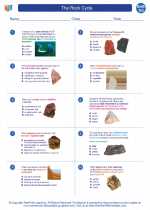Epithelial Tissue
Epithelial tissue is one of the four basic types of animal tissue, along with connective tissue, muscle tissue, and nervous tissue. It lines the surfaces and cavities of the body and forms the outer layer of the skin. Epithelial tissue also lines the internal organs, blood vessels, and glands.
Types of Epithelial Tissue
There are several types of epithelial tissue, including:
- Squamous epithelium: This type of epithelium is composed of flat, scale-like cells. It is found in the lining of blood vessels, alveoli of the lungs, and the outer layer of the skin.
- Cuboidal epithelium: Composed of cube-shaped cells, cuboidal epithelium lines the kidney tubules and the ducts of certain glands.
- Columnar epithelium: Columnar epithelium consists of tall, column-shaped cells and can be found in the lining of the digestive tract and the respiratory tract.
- Transitional epithelium: This type of epithelium is able to stretch and is found in the urinary bladder and ureters.
Functions of Epithelial Tissue
Epithelial tissue serves several important functions in the body, including:
- Protection: It forms a protective barrier against mechanical injury, pathogens, and fluid loss.
- Absorption: Some epithelial cells are specialized for absorption, allowing for the uptake of nutrients and other substances.
- Secretion: Glandular epithelial cells are involved in the secretion of mucus, hormones, enzymes, and other substances.
- Sensation: Certain epithelial cells are involved in sensation, such as those in the skin and the taste buds.
Study Guide
When studying epithelial tissue, it's important to familiarize yourself with the different types of epithelium, their locations in the body, and their specific functions. It can be helpful to use diagrams and labeled images to identify the different types of epithelial tissue and understand their structural characteristics.
Additionally, understanding the role of epithelial tissue in protection, absorption, secretion, and sensation will help you appreciate its importance in maintaining the overall function and health of the body.
Be sure to also study the microscopic structure of epithelial tissue, including the presence of tight junctions, desmosomes, and other specialized cell-to-cell connections that contribute to the tissue's overall function.
Finally, consider the clinical relevance of epithelial tissue, including how disruptions or diseases affecting epithelial cells can impact various bodily functions and lead to health issues.
Overall, a comprehensive study of epithelial tissue should involve a combination of visual aids, detailed descriptions, and an understanding of its physiological significance.
.◂Earth Science Worksheets and Study Guides High School. The Rock Cycle

 Worksheet/Answer key
Worksheet/Answer key
 Worksheet/Answer key
Worksheet/Answer key
 Worksheet/Answer key
Worksheet/Answer key
 Vocabulary/Answer key
Vocabulary/Answer key
 Vocabulary/Answer key
Vocabulary/Answer key
 Vocabulary/Answer key
Vocabulary/Answer key
